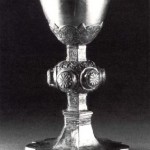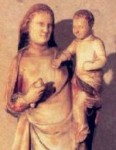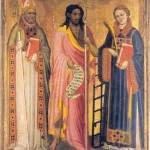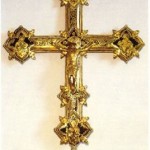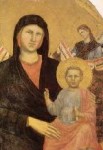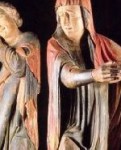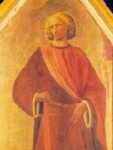The Diocesan Museum of Santo Stefano al Ponte, inaugurated in 1995, is set in the Augustinian convent complex of Lecceto. At the entrance one finds the chapel of the Blessed Sacrament erected in 1586 which has maintained its ancient splendor unaltered with its 1700’s altar-cloth on the altar, the bronze candelabra of the 1600’s, an 18th century chalice covered by a voile, the burse,a lectern, a 19th century missal.
Adjacent to the Chapel of the Sacramento is the so-called Goldsmiths’ Chapel of the Confraternity of Saint Luke with a painted 14th century cross attributable to the circle of Taddeo Gaddi. From here one goes on to the collection of paintings which hasa series of important painted devotional panels with a gold background such as: the Madonna with Child of the neo-Byzantine school, the Crucifixion by Cenni di Francesco, the Madonna of the Humility by the Master of the Straus Madonna (moved in September 2014 at the Parish of Santa Maria in Quinto, Sesto Fiorentino, along with the Triptych of Spinello Aretino) and three Madonnas with Child by Valdelsa masters of the end of the 1300’s.
Continuing the visit, the 1602 oil painting by Santi di Tito of the Meeting of Abraham’s Servant with Rebecca at the well, two paintings by Giovanni del Biondo and a panel by Bicci di Lorenzo portraying Saint Lucy, Saint Mary Magdalene and Saint Donatothe Bishop are to be pointed out.

